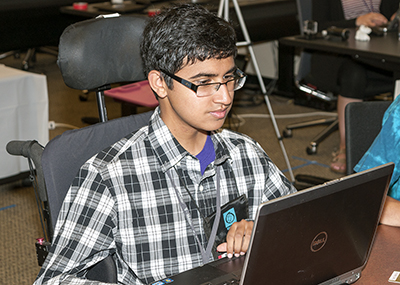Overview

The AccessCyberlearning initiative fosters synergistic and lasting relationships among
- Learn About AccessCyberlearning 1.0 and AccessCyberlearning 2.0
Read about project goals, objectives, activities, and products. - Read AccessCyberlearning 2.0: Examining Equity Practices for Inclusive Stakeholder Engagement
How can we use collaborative elements and equitable practices to ensure an inclusive stakeholder engagement process in conducting a research effort to benefit individuals with disabilities? - Creating Inclusive Learning Opportunities in Higher Education: A Universal Design Toolkit
Order this must-have book that has how-to instructions for applying UD to everything we do in higher education, and complements the 2015 book Universal Design in Higher Education: From Principles to Practice. Learn more in this podcast episode of Trending in Education. - Read Accessible Cyberlearning: A Community Report of the Current State and Recommendations for the Future
Learn about the design of current and future learning technologies and pedagogy to be inclusive of everyone. - Apply 20 Tips For Teaching an Accessible Online Course
Use a checklist, watch a video, and/or complete a tutorial to begin making an online course accessible, usable, and inclusive. - Join a Community of Practice
Engage in online discussions and learn of opportunities to promote the AccessCyberlearninginitiative. - Learn the Basics about Access to Online Learning by People with Disabilities
View a video and read a publication about how people with disabilities can fully engage in online learning. - Apply Universal Design to Online Programs
Consult a useful checklist for making distance learning programs welcoming and accessible to all students. - Learn How Online Practices Can Open or Close Doors
Read an analysis of research and practice around the social inclusion of individuals with disabilities in online learning.
The AccessCyberlearning project is funded by the National Science Foundation (grant #IIS-1550477, #DRL-1824540). Any questions, findings, and conclusions or recommendations expressed in this material are those of the author and do not necessarily reflect the views of the federal government.